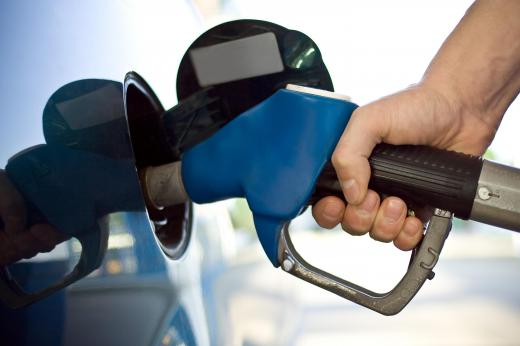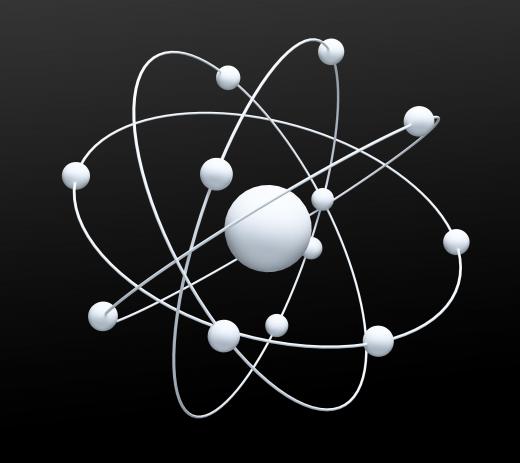What Is Chemical Potential Energy?
Chemical potential energy is energy that is stored in atoms and the bonds between atoms and can be released by various chemical reactions. An example that most people are familiar with is the energy released when fossil fuels such as gasoline are burned. In this instance, the chemical potential energy of the gasoline is released mainly as heat. The human body releases the potential energy of food to use as fuel. Chemical potential energy is present in many compounds and chemicals, both naturally occurring and man made.
The bonds between atoms are the source of all chemical potential energy. Atoms with very strong bonds of the ionic or covalent type have relatively low potential chemical energy, as it requires a large amount of outside energy simply to break the bonds. Weaker bonds, like those of the van der Waal type, have more potential chemical energy, as they require relatively little energy to break.

Energy is released when these bonds form between atoms, and the energy in chemical reactions is not created or destroyed. This means that chemical reactions may be analyzed like mathematical equations. Since a strong bond requires a large amount of energy to break, this must mean that when that same bond forms, much energy is released. By the same logic, when a weak bond forms, relatively little energy is released.

For example, when two hydrogen atoms bond to form a hydrogen gas molecule, they form a strong bond. This requires little outside energy to accomplish. The chemical energy of the atoms is released as heat and light. In order to break the bond between the two atoms, the same amount of energy that was released when they bonded must be applied to break the bond. This energy will be absorbed by the atoms.

We encounter the mechanisms of the release of chemical potential energy everyday. Burning gas in our cars is just one way. The way this energy is released is by the combination of oxygen molecules with the molecules of the fuel. The oxygen molecules and the fuel molecules are bound with relatively weak bonds. When the fuel burns, the oxygen and fuel molecules are broken apart, and recombine as carbon dioxide and water molecules, which are both formed with very strong bonds, so a large amount of energy is released. This energy is then converted by the engine to kinetic energy and used to move the vehicle.
AS FEATURED ON:
AS FEATURED ON:














Discussion Comments
@irontoenail - You shouldn't think about energy that way, as a substance that's almost like a solid thing. Energy in physics is usually thought of as more, what one solid thing can do to affect another solid thing.
So, chemical energy isn't the actual heat and light themselves, they are just a byproduct of it. It also isn't the movement, per sec, it's the fact of the movement, if that makes sense. Or the potential that the movement could exist.
It's the force that one thing can exert on another thing to create change. The movement is the change, not the force itself.
I hope that makes some sense.
@umbra21 - Kinetic energy was always the most difficult thing for me to grasp. I mean, you can see and feel thermal energy, and electric energy as well for that matter.
But, kinetic energy just seems like an abstract to me, for some reason. You can use chemical energy to create kinetic energy, like when you use gas in an engine to make your car go, but it doesn't have anything to look at, other than movement, if that makes sense.
I guess movement seems to be such a ubiquitous thing, more even than heat and light, that I have a hard time seeing it as an "energy" by itself.
We learned about potential energy when I was doing biology in high school. It took me a while to grasp it, I remember. The idea of something which didn't actually exist yet, which was still measurable was a bit of a stretch for my mind.
But I got it eventually. I think there was potential physical energy as well as potential chemical energy. The chemical was easier to understand than the physical really, because you can look at, say, a flask of petrol and understand that it has the potential to burn and create heat.
But it's harder to look at, say a rock at the top of a hill, and see that it has potential kinetic energy. It's just not something we associate with it, I suppose.
Post your comments